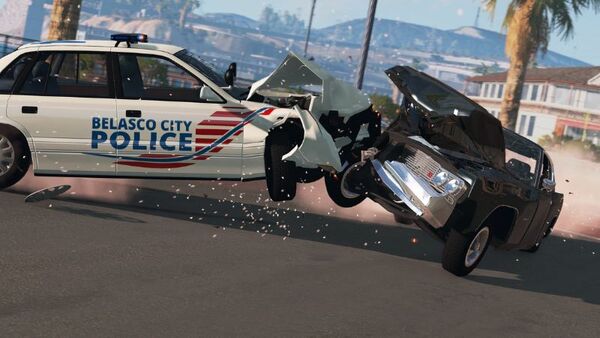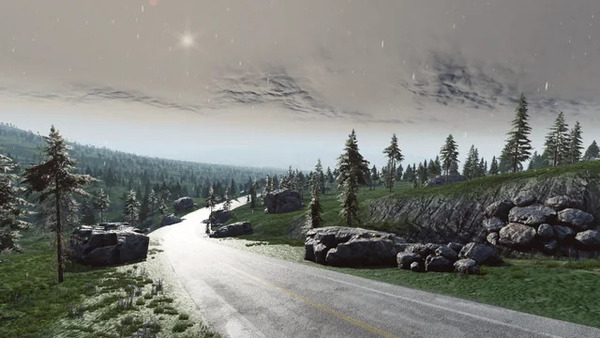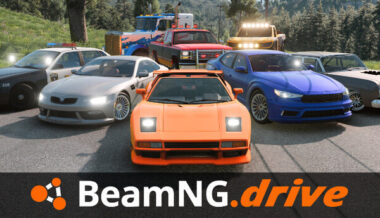Introduction
BeamNG.drive is widely acclaimed for its meticulous attention to vehicle physics and realistic simulation. One of the game’s most intricate yet rewarding aspects is managing suspension for different terrains, especially when navigating rough, uneven surfaces. Proper suspension tuning can drastically impact how well a vehicle handles, brakes, and maintains stability on various terrains, from rocky trails to muddy paths. This article delves into the finer points of vehicle suspension in BeamNG.drive, offering insights into managing suspension adjustments, damage control, and terrain adaptation for optimal off-road performance.
- Understanding Suspension in BeamNG.drive: The Basics
Suspension systems in BeamNG.drive are highly sophisticated, simulating real-world physics to deliver an authentic driving experience. Each component—from springs to shocks—plays a role in vehicle stability.

Suspension systems in BeamNG.drive are highly sophisticated, simulating real-world physics to deliver an authentic driving experience
Types of Suspension in BeamNG.drive
BeamNG.drive features different suspension setups for various vehicles, such as solid axles for trucks and independent suspensions for cars. Each type handles terrain differently, requiring unique tuning adjustments.
Suspension’s Role in Terrain Navigation
Suspension isn’t just about comfort; it’s essential for control on uneven surfaces. When tuned properly, suspension can absorb shocks from rough terrain, helping maintain traction and vehicle stability.
- Adapting Suspension for Off-Road Conditions
When taking on off-road challenges, suspension tuning becomes critical. Adjusting suspension settings for mud, gravel, or rocky paths can make a significant difference in handling and control.
Soft Suspension for Rough Terrain
For bumpy surfaces, a softer suspension setting helps absorb the impact, making the vehicle less likely to bounce uncontrollably. It provides better grip and control on rugged terrain.
Stiff Suspension for High-Speed Off-Roading
If you’re aiming for speed, a stiffer suspension prevents bottoming out on smaller bumps. However, be cautious; too stiff a setting may cause instability on larger obstacles.
- The Impact of Spring Rate on Vehicle Handling
Spring rate, which determines how much a spring compresses under weight, is a vital suspension parameter that affects how well a vehicle handles various loads and terrains.
Adjusting Spring Rate for Different Weights
Vehicles with heavy loads benefit from higher spring rates to prevent excessive sagging, which could compromise control. Meanwhile, lighter vehicles might perform better with lower rates for greater flexibility.
Balancing for Mixed Terrain
If your route includes varied surfaces, aim for a balanced spring rate that offers moderate stiffness, allowing for a smooth transition between soft and firm surfaces.
- Damping: The Key to Controlling Rebound
Damping controls how quickly suspension returns to its neutral position after compression. Too much or too little damping can cause instability, especially when navigating obstacles.
Setting Up Rebound Damping
High rebound damping is ideal for smoother, controlled returns, preventing your vehicle from bouncing after each bump. However, excessive rebound damping can lead to a “stiff” feel.
Compression Damping for Rougher Surfaces
On rougher terrains, increased compression damping helps prevent the suspension from bottoming out. A balance between compression and rebound damping keeps the vehicle steady on unpredictable paths.
- Terrain-Based Suspension Adjustments: From Mud to Rocks
Suspension tuning should change based on the terrain you’re tackling. Each surface type demands a specific setup for optimal performance.
Navigating Muddy Paths with Soft Suspension
Mud requires softer settings to prevent the vehicle from sinking too deeply and to maintain traction. Increasing ground clearance can further enhance stability in deep mud.
Handling Rocky Terrain with Increased Damping
On rocky trails, stiffen up the suspension to prevent excessive motion over large rocks. This setting reduces the risk of damage while providing control over uneven terrain.

On rocky trails, stiffen up the suspension to prevent excessive motion over large rocks
- Managing Suspension Damage: Prolonging Vehicle Lifespan
Damage to suspension can severely impact vehicle performance, especially in BeamNG.drive, where realism is a focus. Knowing how to manage and repair suspension is key to extended gameplay.
Identifying Signs of Suspension Damage
In BeamNG.drive, indicators like uneven vehicle stance or erratic handling often signal damaged suspension. Early identification helps mitigate further wear and tear.
Repairing and Adjusting Post-Damage
Regularly check suspension health in the game. After significant impacts, make repairs and adjust settings based on the severity of damage to maintain optimal performance.
- The Role of Tires in Suspension Performance
Tires are integral to how suspension performs, as they are the point of contact with the ground. BeamNG.drive allows for tire customization, influencing grip and stability.
Selecting the Right Tires for Terrain
Each terrain type, from sand to gravel, requires different tire treads. In BeamNG.drive, pairing appropriate tires with suspension settings enhances performance.
Adjusting Tire Pressure for Improved Handling
Lower tire pressure increases contact area, useful for soft ground like sand or mud, while higher pressure is ideal for firmer terrain to reduce tire deformation.
- Using Suspension Tuning Tools in BeamNG.drive
BeamNG.drive offers a range of tools for in-depth suspension tuning. From visualizers to live testing, these tools provide valuable insights for fine-tuning your setup.
Leveraging the Suspension Visualizer
The suspension visualizer displays real-time suspension data, allowing players to see how their settings respond to terrain changes. It’s a vital tool for accurate tuning.
Live Testing for Real-World Adjustment
BeamNG’s live testing feature lets players adjust settings mid-simulation, so you can fine-tune damping, spring rate, and other parameters as you drive.
- Common Suspension Issues and How to Solve Them
Navigating BeamNG.drive’s terrains often leads to suspension challenges. Understanding common issues and their solutions can enhance gameplay.
Bottoming Out on Bumpy Roads
If your suspension keeps bottoming out, consider increasing stiffness and compression damping to absorb the shocks better. This setting helps keep the vehicle elevated over obstacles.
Bouncing on Smooth Surfaces
Excessive bouncing is often due to low damping. Increase rebound damping to stabilize the vehicle, preventing uncontrollable bounces on smoother surfaces.
- Practical Tips for Suspension Tuning in BeamNG.drive
Suspension tuning can feel complex, but with a few practical tips, players can achieve better handling and control on all terrain types in BeamNG.drive.
Experiment with Small Adjustments
Small tweaks often lead to big improvements. Adjust one setting at a time, taking note of how each affects the vehicle’s response to terrain.
Keep Terrain in Mind During Tuning
Before tuning, consider the terrain you’ll drive on. For mixed routes, find a balanced setup that provides both flexibility and firmness.

For mixed routes, find a balanced setup that provides both flexibility and firmness
Conclusion
Mastering suspension tuning in BeamNG.drive requires a deep understanding of vehicle mechanics, terrain types, and tuning parameters. Each adjustment, whether it’s damping or spring rate, contributes to how effectively your vehicle tackles rough terrain. By following these detailed tuning guidelines, players can unlock new levels of control and realism in BeamNG.drive, enhancing the overall driving experience across the game’s challenging landscapes.


